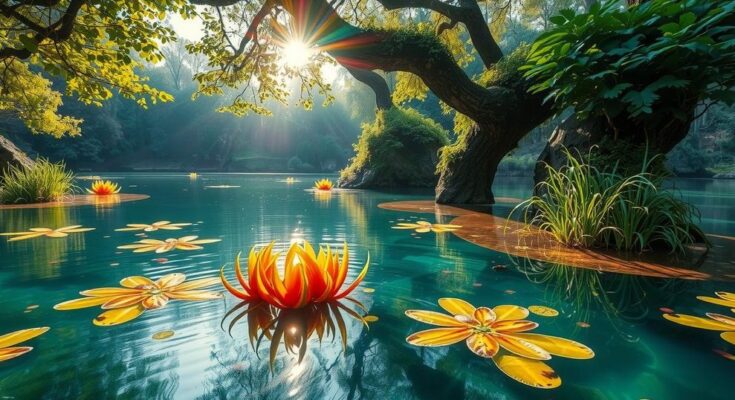A new IUCN report highlights that 43% of Madagascar’s freshwater species, including many endemic, are at risk of extinction. Major threats include habitat degradation from agricultural practices, overfishing, and mining. The report urges for enhanced conservation efforts and acknowledges the importance of these species for local communities.
A recent IUCN study reveals that 43% of Madagascar’s freshwater species face extinction, with many being endemic species vital for local livelihoods. The report, titled ‘The Status and Distribution of Freshwater Biodiversity in Madagascar and the Indian Ocean Islands Hotspot,’ evaluated the extinction risk for 653 species, including fish, molluscs, and aquatic plants, and found this rate of threat to be approximately double that of Africa overall.
Freshwater species are essential for providing clean water and supporting commercial and artisanal fisheries across Madagascar. The primary threats identified include habitat loss due to unsustainable agricultural practices, overfishing, and infrastructure projects like mining and dam construction. These factors endanger the delicate balance of freshwater ecosystems vital to local communities.
Laura Máiz-Tomé, an IUCN Programme Officer and report co-author, expressed concern over the alarming trend of Madagascar’s unique freshwater species heading towards extinction. She emphasized the importance of these species to the livelihoods of the Malagasy people and urged prioritization of conservation efforts to combat this decline.
The intricate wetlands of Madagascar feature over 300 kilometers of rivers and streams along with 2,000 square kilometers of lakes that host a rich diversity of aquatic species including endemic species like the pink-and-orange Madagapotamon humberti crab and the Madagasikara river snail. Unfortunately, deforestation and habitat disruption have drastically reduced the island’s forest cover, threatening the survival of species like the Littoral Pintail dragonfly, now classified as endangered.
Sylvie Andriambololonera, Coordinator at the Missouri Botanical Garden in Madagascar, highlighted the urgent need for continuous field assessments of freshwater plants, many of which have not been recorded for decades. She emphasized that current assessments are critical for identifying conservation priorities and filling knowledge gaps regarding Madagascar’s unique biosphere.
The study also delineated 23 fresh water Key Biodiversity Areas, which are vital for preserving biodiversity in Madagascar. The report notes that freshwater biodiversity is woefully underrepresented in protected areas, necessitating urgent attention from conservationists and stakeholders alike.
William Darwall, head of IUCN’s Freshwater Biodiversity Unit, pointed out that approximately 25% of the assessed species are classified as Data Deficient on The IUCN Red List, indicating significant gaps in knowledge that hinder effective conservation efforts. He called for intensified research to protect Madagascar’s unique freshwater species more effectively.
This critical study was funded by the Critical Ecosystem Partnership Fund (CEPF) and received support from the Madagascar Ministry for Environment, showcasing a collaborative effort towards conservation. IUCN and its partners will disseminate the findings to various stakeholders in Madagascar to promote conservation and management measures for freshwater ecosystems.
To ensure success in aquatic conservation strategies, decision-makers must consider the cultural practices of the Malagasy people, particularly traditional systems known as ‘fady’ which govern the sustainable harvesting of freshwater species, thus offering some protection for vulnerable species.
In summary, the IUCN report illuminates the critical state of Madagascar’s freshwater biodiversity, with nearly half the species facing the threat of extinction. This alarming situation demands immediate action to bolster conservation efforts, support local livelihoods dependent on these ecosystems, and integrate cultural practices into management strategies. Continued research and updated assessments are essential for addressing knowledge gaps and prioritizing the protection of Madagascar’s unique aquatic life.
Original Source: iucn.org




